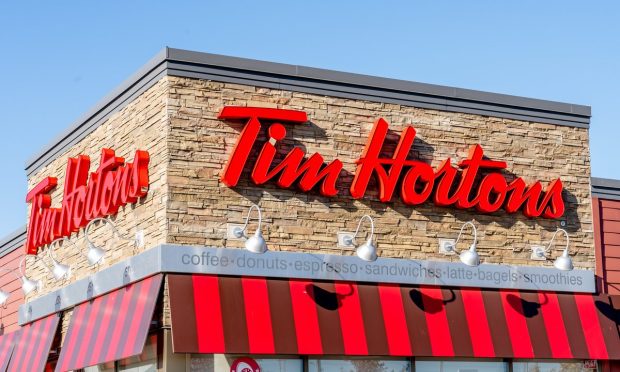Tim Hortons Touts Record-High Digital Mix in Canada

Restaurant Brands International’s loyalty strategy is clicking into place. On a call Tuesday (February 15) discussing the firm’s fourth-quarter and full-year 2021 results, the Toronto, Canada-based company, parent of popular brands Burger King, Tim Hortons, Popeyes, and Firehouse Subs, touted “improvement” in its digital channels across its markets.
“During the fourth quarter, Tim’s Canada derived over a third of its sales from digital channels an all-time high for the brand, and Popeye’s and Burger King home markets generated 16% and 9% respectively, while our international markets drove over 50% of sales through digital channels,” Joshua Kobza, the company’s chief financial officer, told analysts on a call. “We attribute this improvement to a combination of factors including growth in delivery, an increase in mobile order and pay and continued traction from loyalty.”
He noted that the year was the first in which every brand had a loyalty program up and running in its home market. Additionally, Tim Hortons updated its loyalty program to be less focused on building out its membership and more focused on driving sales. Kobza noted that this led to “the highest sales contribution from loyalty to date.”
Moreover, given consistent findings across restaurant brands that omnichannel consumers, those who purchase both digitally and in stores, are the highest-value customers, the company is looking to integrate loyalty technology into its physical stores.
For instance, on the earnings call, Tom Curtis, president of Burger King, U.S. and Canada, noted that the brand is aiming to add digital menu boards to all of its drive-thru locations in the two countries. This move presents an opportunity for the brand to both encourage adoption of the loyalty program for drive-thru customers and to incentivize existing loyalty program members to order from the drive-thru more often.
“Becoming a leader in the digital space also involves completing the rollout and effective utilization of our outdoor digital menu boards, where over 70% of our guests order with us today,” he said. “As we continue to expand our royal loyalty program, we expected to see synergies from integrating loyalty into these dynamic digital boards.”
Loyalty programs are a significant motivator for many consumers, according to data from the most recent edition of PYMNTS’ Digital Divide study, The Digital Divide Report: Technology As A Catalyst For Restaurant Purchases, created in collaboration with Paytronix. The report, which featured a census-balanced survey of more than 2,400 United States adults conducted in early December, noted that 39% of restaurant customers say that rewards programs would encourage them to make more purchases.
Related: PYMNTS Intelligence: How Eateries Can Tap Order Throttling Tools as Delivery Demand Grows
Furthermore, findings from the January edition of The Digital Divide Report: Minding The Loyalty Gap, which drew from a survey of a similar-sized panel conducted in the fall, noted that 61% of respondents had earned loyalty rewards for their spending in the previous 30 days. Additionally, more than half of all consumers in their early 40s and younger reported being members of loyalty programs.
See: Restaurants Compete to Make Loyalty Programs Stand Out as Consumers Join Multiple Programs
